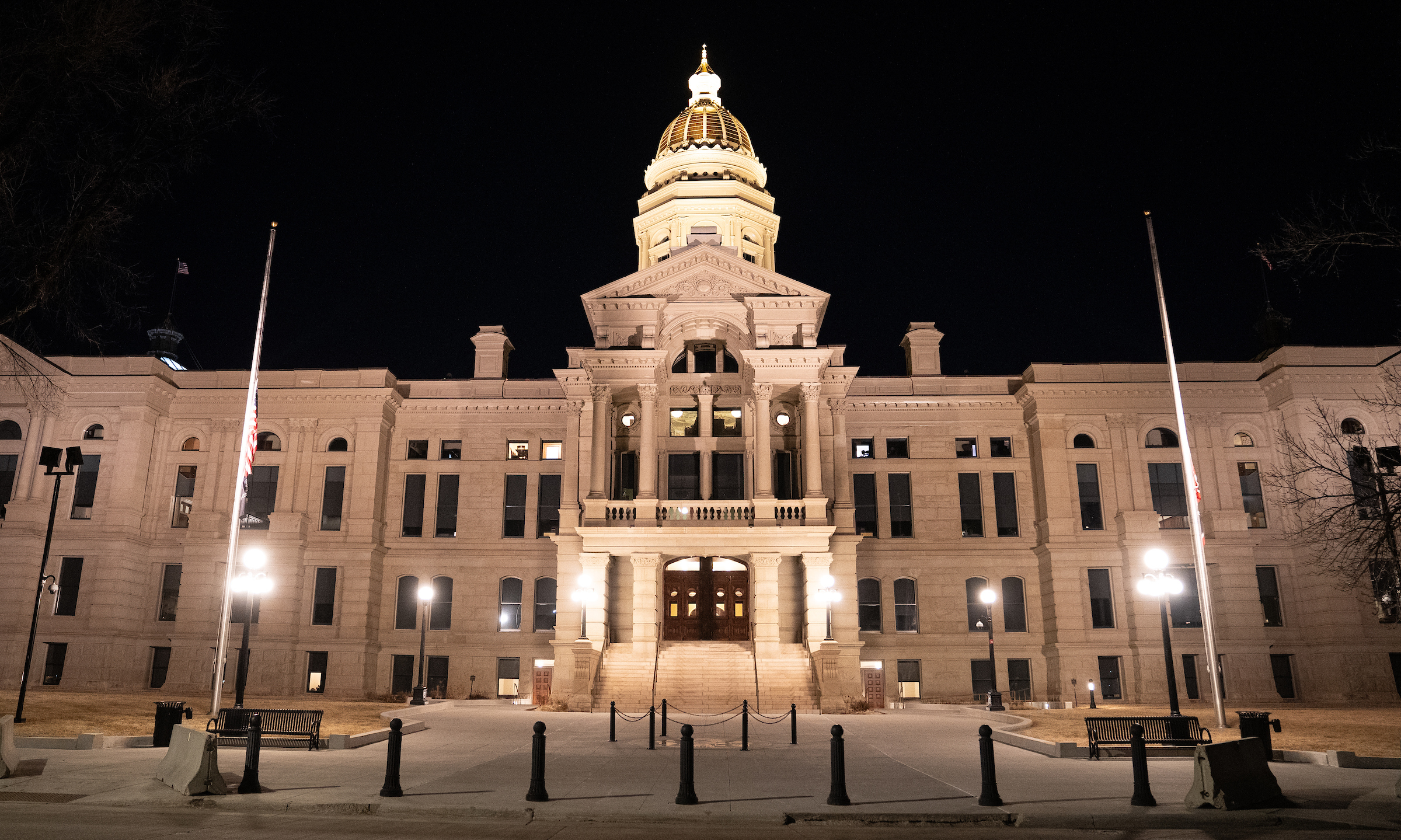
By Hannah Shields
Wyoming Tribune Eagle
Via- Wyoming News Exchange
CHEYENNE — The process to repeal gun-free zones in the Capitol and other state-owned buildings through the executive branch has officially begun.
During a State Building Commission meeting on Wednesday, Gov. Mark Gordon upheld his promise in his veto of House Bill 125, “Repeal gun free zones and preemption amendments,” to reconsider gun-free zones in state facilities.
The SBC is made up of the state’s top five elected officials: Gordon, Secretary of State Chuck Gray, State Auditor Kristi Racines, State Treasurer Curt Meier and Superintendent of Public Instruction Megan Degenfelder.
On Wednesday, Gordon directed the State Construction Department to draft rules that would allow “for the public and state employees to exercise their Second Amendment and concealed carry rights in state-owned buildings and facilities that are operated by the executive branch,” according to a Thursday news release from his office.
“This conversation has been a long time coming,” Gordon stated in the release. “And I am delighted that we, as the State Building Commission, are taking a comprehensive look at eliminating gun-free zones where appropriate, using a fair and deliberative public process.”
A hospital board of trustees in Campbell County is already considering lifting gun-free restrictions in certain parts of Gillette Hospital. In the news release, Gordon commended the hospital board for its efforts and recommended that other local school districts, hospitals and governments start up similar conversations.
One bill from the past budget session that was signed into law appropriates $100,000 from the School Foundation Program Account into a Firearms on School Property Account.
Current statute gives public K-12 schools the option to arm their teachers with firearms and provide firearm training; this account would provide funds for smaller school districts unable to afford the program.
“As I encouraged in my letter, there are authorities in place for local boards, commissions, and trustees to begin these conversations at the local level,” Gordon said in the news release. “It is encouraging to see the commitment to full public discourse beginning to take place at the most appropriate levels of government.”
Jurisdiction in the capitol
The Capitol has multiple levels, including an underground extension connecting it to the Herschler Building, overseen by either the executive or legislative branch.
The State Building Commission is a function of the executive branch, meaning rules changes it makes will only apply to state facilities within its jurisdiction.
When it comes to the Capitol, which is shared between both executive and legislative officials, things get a little complicated.
One point brought up by Secretary of State Gray during the meeting is whether the commission held jurisdiction over the Capitol’s corridors both during and outside of the legislative session.
“If the answer to that is no, it’s going to be difficult for this to be carried out,” Gray said.
Gordon said it was because of these jurisdictional conflicts that he wanted to initiate a “meticulous” process of drafting rules and involving public comment. Even the definition of “hall” needs to be clearly defined, he added.
“The board could recommend ‘x’ or ‘y,’ but then the Management Council (made up of legislative leadership) would either have to concur or recommend ‘a’ or ‘b’,” Gordon said. “There’s a certain amount of power-sharing in this building.”
Rep. Bob Nicholas, R-Cheyenne, who chairs the House Appropriations Committee, said this needed to be a joint process between both branches. Nicholas added that the point of the Capitol Complex group, which is made up of members from both of these entities, is “to formulate draft rules and circulate them between the bodies.”
Before any rules changes are adopted or preserved, Nicholas suggested there be a joint review among the respective entities.
Gray agreed it was the best approach to make the rule changes in a uniform way, but he also speculated there could be areas of disagreement between the two branches, and that was where this rules package would come into play.
What comes next
Current Wyoming statute lists a number of facilities where firearms are prohibited, such as detention facilities, schools, college campuses, courtrooms and meetings of a governmental entity or legislative committee.
State Building Commission Secretary Suzanne Norton told the WTE in an email that SBC rules “must be written to comply with existing law or must be changed after the law changes.”
There are also executive branch facilities within the state’s property portfolio “that may be incompatible with allowing concealed carry,” she added. Examples of this include behavior and other health care facilities, or facilities where conflict is a part of its operations.
There is a rules promulgation process the SBC must follow in order to consider any rules change. An agency must first draft rules in consultation with the Attorney General’s Office before presenting to the commission for its consideration.
If approved, the agency must then compile all the necessary documents into a packet, which is sent to the governor’s office for permission to proceed. Once the governor approves the packet, the rules are uploaded by the agency to the Secretary of State’s rules system.
This kicks off a public comment period of at least 45 calendar days. At the close of the public comment period, the SBC will hold a meeting to discuss the rules packet and additional comments, then vote on whether to adopt the rules.
If adopted, the final rules packet is uploaded through the Secretary of State’s rules system within 10 calendar days. However, the rules do not go into effect until they are signed by the governor and filed with the Secretary of State’s Office within 75 calendar days of adoption.
Norton said a timeline is in the works to accommodate these steps and “include significant stakeholder engagement.”
A meeting strategy will also be developed to align with this timeline.
Draft rules, timelines, public comment opportunities and other materials can be accessed by the public on the State Construction Department’s website as they become available, at stateconstruction.wyo.gov.





